Medication Safety Calculator
Calculate Your Medication Safety Risk
Every time you pick up a prescription, you’re trusting someone to catch a mistake that could land you in the hospital. But if you’re using different pharmacies for different meds, that safety net is broken. One pharmacy isn’t just convenient-it’s a critical line of defense against dangerous drug interactions, duplicate prescriptions, and missed doses. And the data doesn’t lie: people who fill all their meds at a single location are up to 34% less likely to experience a harmful drug interaction than those who shop around.
How One Pharmacy Stops Dangerous Drug Interactions
Pharmacists aren’t just dispensers of pills-they’re trained to spot hidden dangers in your medication list. When you use one pharmacy, that pharmacist sees your full history: every prescription, every over-the-counter pill, every supplement. That full picture lets their software scan for interactions in real time. Systems used by major chains like CVS and Walgreens can flag more than 10,000 potential drug combinations that could cause harm. One of the most common and deadly? Warfarin (a blood thinner) mixed with NSAIDs like ibuprofen. Alone, warfarin carries a risk of bleeding. Add ibuprofen, and that risk jumps five times higher. At a single pharmacy, that combo gets flagged before it leaves the counter. At two different pharmacies? The first pharmacist might not know you’re taking the other drug. The second might not know about the warfarin. And suddenly, you’re at risk of internal bleeding with no warning. A 2014 study in the Journal of Managed Care & Specialty Pharmacy found that patients using multiple pharmacies had a 34% higher chance of a dangerous drug interaction. The same study showed that therapy duplication-like accidentally taking two different pills with the same active ingredient-is almost eliminated when all prescriptions go through one place. That’s not a small win. It’s life-saving.Med Sync: The Hidden System That Keeps You on Track
Most people don’t realize pharmacies offer something called medication synchronization, or “med sync.” It’s not a magic trick-it’s a simple process designed to make your life easier and safer. Here’s how it works:- You talk to your pharmacist about syncing all your prescriptions.
- They review every medication you take, including vitamins and pain relievers.
- They adjust refill dates so everything comes due on the same day each month.
- You pick up all your meds at once-no more juggling three different pickup dates.
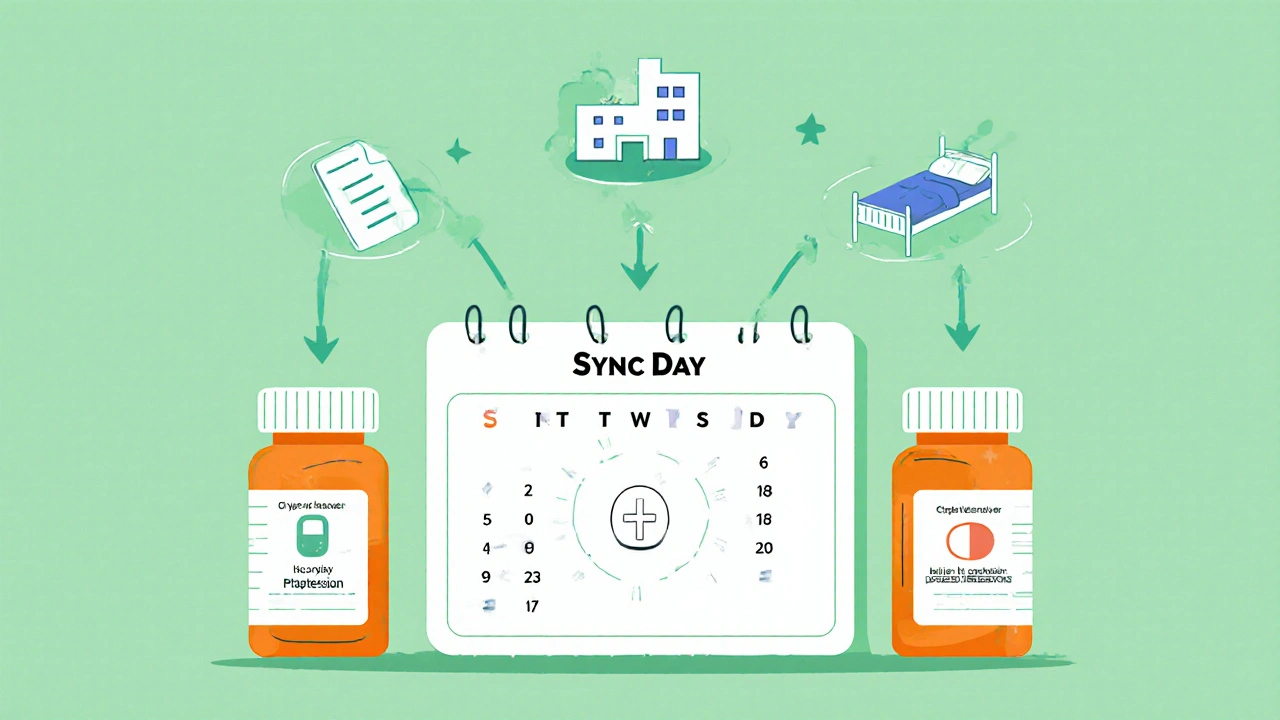
Why People Still Use Multiple Pharmacies (And Why It’s Risky)
You might be thinking: “But I save money by switching pharmacies.” And yes, that’s true. A 2022 Consumer Reports study found people can save $150-$300 a year by shopping around for the lowest price on each prescription. But here’s the trade-off: that savings comes at a cost. The same study showed patients using multiple pharmacies have a 27% higher risk of an adverse drug event. That’s not just a number. It’s a trip to the ER. A week in the hospital. A $8,750 bill on average, according to the Agency for Healthcare Research and Quality. One patient in Cleveland was hospitalized with serotonin syndrome after two different pharmacies filled conflicting antidepressants-neither pharmacist knew the other had prescribed a similar drug. That’s not rare. Reddit’s r/Pharmacy community had 142 people respond to a question about pharmacy use: 68% recommended sticking to one pharmacy if you take three or more medications. But 55% admitted they still switch for price. The truth? You can’t outsmart the system. If you’re on five or more medications-a group that makes up 15% of U.S. adults-fragmented pharmacy use is like driving with blind spots. You might think you’re saving cash, but you’re gambling with your health.How to Switch to One Pharmacy (Step by Step)
Switching doesn’t have to be a headache. Here’s how to do it in under a month:- Make a complete list of everything you take: prescriptions, OTC painkillers, vitamins, herbal supplements-even the ones you only take “as needed.”
- Call your current pharmacy and ask if they can transfer all your prescriptions. Most can handle this in 2-5 business days.
- Choose your pharmacy based on location, hours, and whether they offer med sync. Chain stores like CVS, Walgreens, and Rite Aid all have formal programs. Independent pharmacies often offer more personalized service.
- Ask for a med sync enrollment during your next visit. It’s free. No extra paperwork. Just a 15-20 minute chat.
- Wait for your first sync date. Your pharmacist will give you short fills for any meds that aren’t due yet so everything lines up.
- Stick with it. After your first full sync, you’ll only need to visit once a month for all your meds.
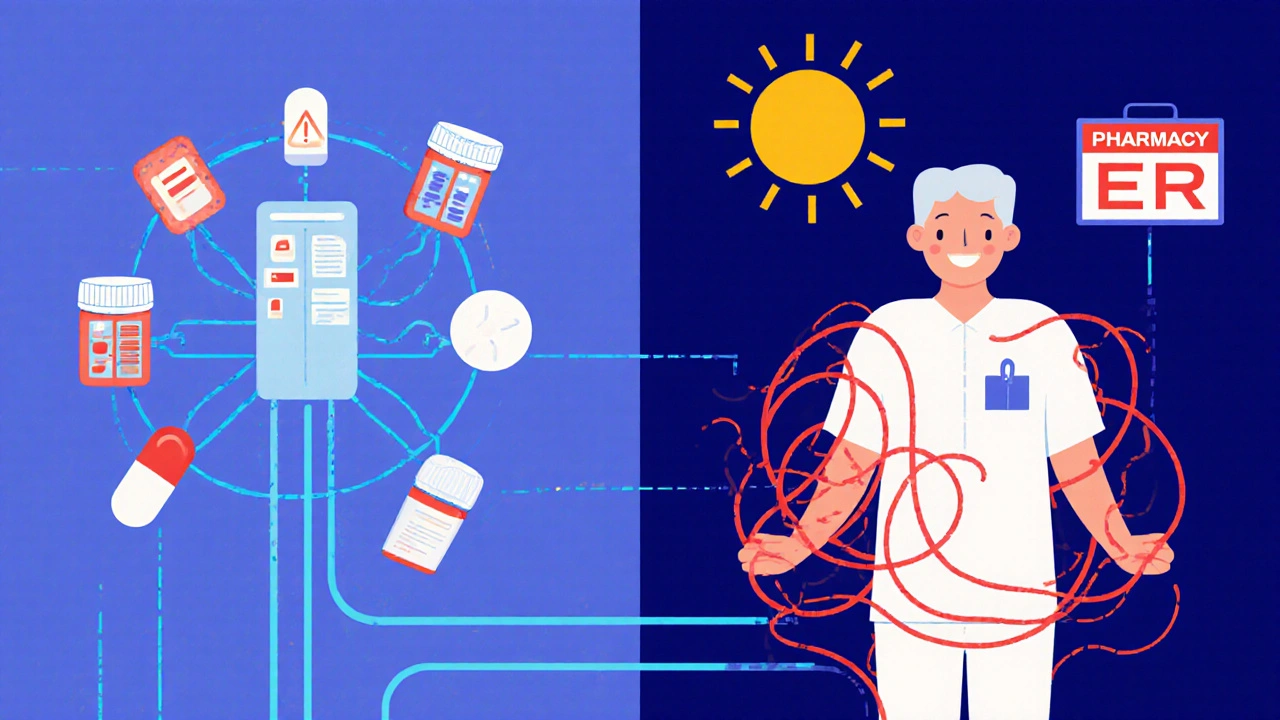
What’s Changing in 2025
Health systems are catching on. In 2023, the Pharmacy Quality Alliance made “comprehensive medication review completion” a key performance metric. That means pharmacies are now financially incentivized to keep patients on one pharmacy and conduct full med reviews. In 2024, CMS proposed new rules offering bonuses to pharmacies that hit 90%+ med sync rates. And by 2025, the University of Southern California’s Polypharmacy Research Group plans to launch an AI tool that doesn’t just flag interactions-it predicts which combinations might actually help or hurt based on your full health history. But here’s the catch: technology can’t fix what humans don’t do. If you keep switching pharmacies, even the smartest software won’t know what you’re taking. The best tool in the world is still a pharmacist who knows your name, your meds, and your routine.Real Talk: Is One Pharmacy Right for You?
If you take one or two meds? You might not need it. But if you’re on three or more-especially if you have diabetes, heart disease, kidney issues, or take blood thinners-then yes. This isn’t optional. It’s basic safety. Think of it like this: you wouldn’t let five different mechanics work on your car at once. Why let five different pharmacies handle your meds? The cost savings from switching pharmacies are real-but so are the risks. And when it comes to your health, the cheapest option isn’t always the safest. One pharmacy. One pharmacist. One full picture. That’s how you avoid the mistakes that hospitals see every day.Can I still save money if I use only one pharmacy?
Yes. Many pharmacies offer price matching, discount programs, or generic alternatives. Ask your pharmacist to check if your meds are available at a lower cost through their loyalty program or mail-order service. Some even offer $4 generic lists for common medications. While you might not get the lowest price on every single pill, you’ll avoid the hidden costs of hospital visits caused by drug interactions.
What if my doctor prescribes something new? Do I have to go back to the same pharmacy?
Always take new prescriptions to your main pharmacy. Even if the prescription is handed to you at the clinic, bring it to your regular pharmacy. That way, your pharmacist can immediately check for interactions with your existing meds. Most pharmacies will accept new prescriptions from any doctor-no need to switch.
Does my pharmacy share my info with other providers?
Yes, but only with your consent. Under HIPAA, pharmacies can share your medication history with your doctors and other providers if you sign a release. Many now use integrated systems like Epic or Cerner that let your doctor see your full list-especially if you use one pharmacy. But if you use multiple pharmacies, your doctor won’t see the full picture unless you manually give them every receipt.
Can I use one pharmacy if I have multiple insurance plans?
Absolutely. You can use one pharmacy even if you have different insurance for different meds. Your pharmacist can process each prescription under the correct plan. They’re trained to handle complex insurance situations. Just make sure they know which plan covers which drug.
What if my pharmacy doesn’t offer med sync?
Ask. More than 90% of major pharmacy chains offer it. If your local pharmacy says no, try another one nearby. Independent pharmacies often offer even more personalized service. You can also call your insurer-they may have a list of pharmacies with med sync programs that are in-network.

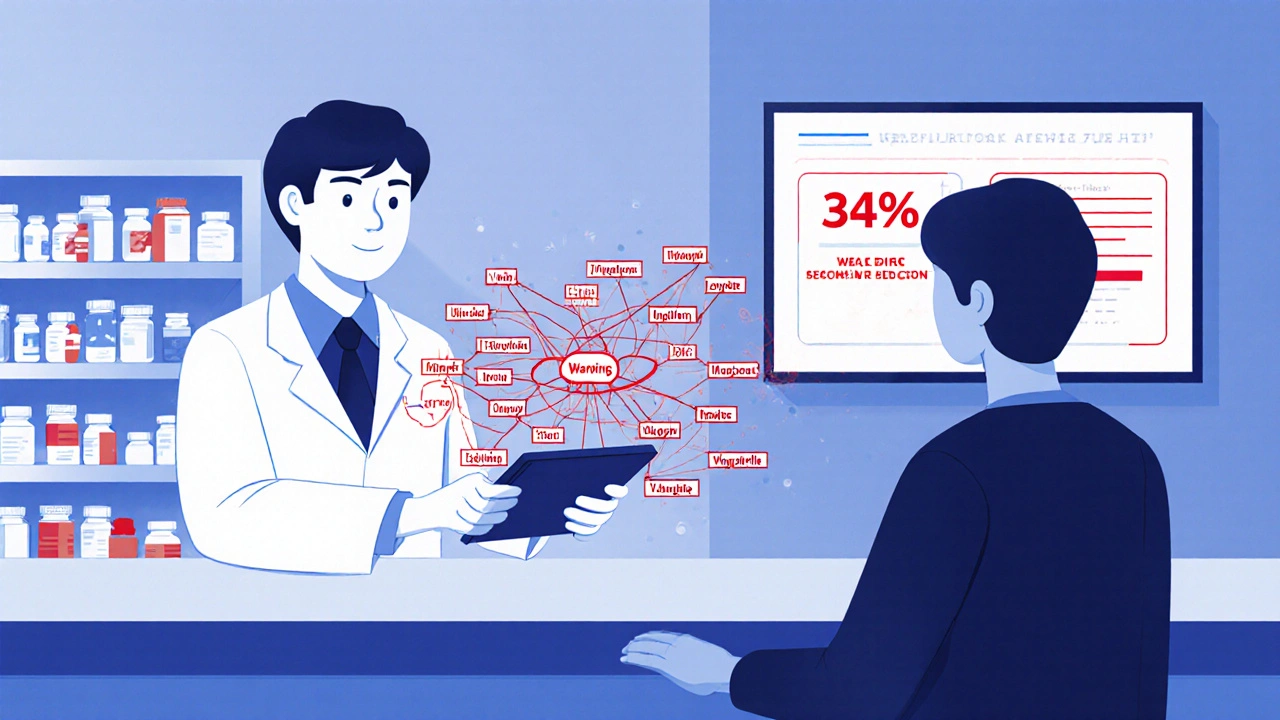

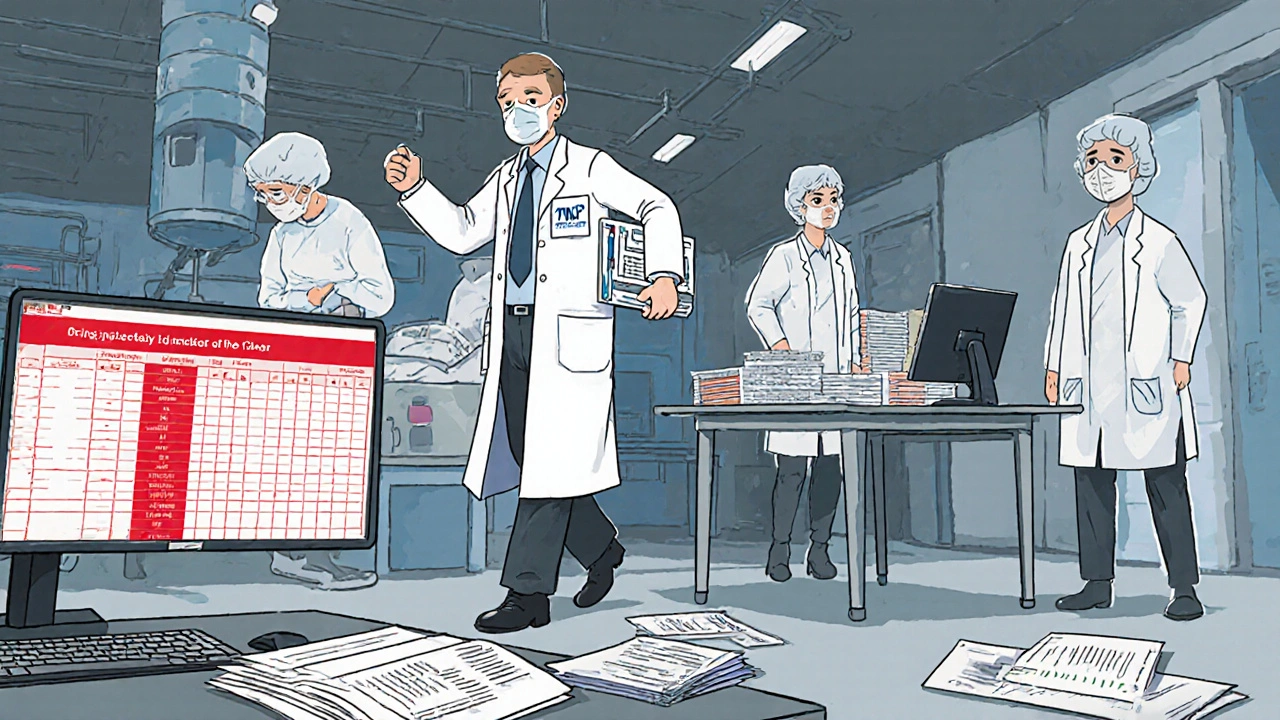



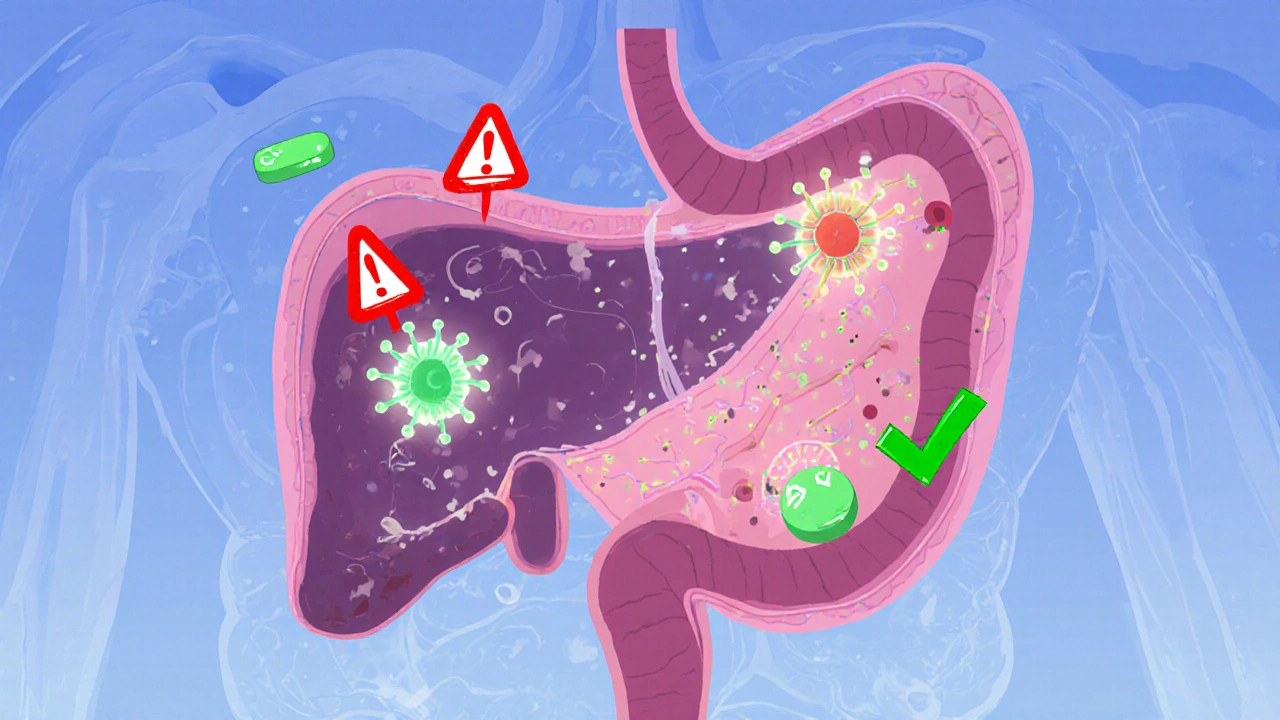
14 Comments